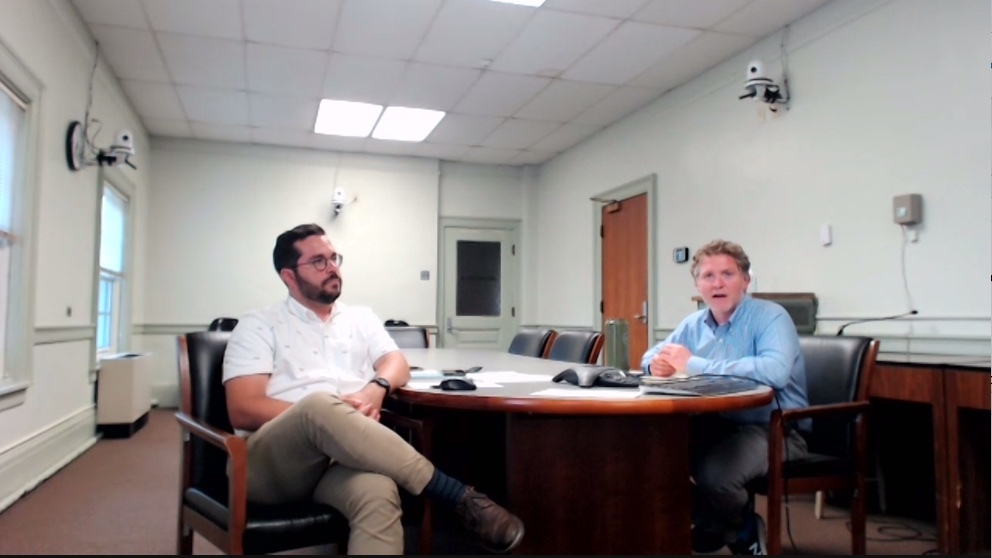
Pittsfield's Bicycle Network Will Connect 100 Miles of the City

PITTSFIELD, Mass. — At its third and final public meeting, the Bike Facilities Master Plan project team on Monday announced that designs for a bicycle network that covers nearly 100 miles of Pittsfield are complete.
This plan aims to create a safe, user-friendly connected bicycle network throughout the city based on transportation factors, land use factors, and demographic factors. It will be implemented over the years as the city has opportunities to add more bike accommodations to its infrastructure.
"We understand that the city may not have all the resources necessary right at this moment to implement all the recommendations we make in this plan, this is a long-range master plan for bicycle facilities," project manager Aditya Inamdar said.
"So as part of the overall network, we've identified a lot of corridors that connect different neighborhoods and destinations, but we also have prioritized them so the city can kind of get through implementation over time."
The plan has been in the works since the early 2000s but was officially launched in August 2020. It is a joint effort between Pittsfield's Office of Community Development and the Department of Public Services and Kittelson & Associates engineering firm was contracted for research and design.
Project goals include developing a citywide plan that is based on transportation factors, a network that can be built over time, a network with a range of bicycle facility types to fit different locations and thinking beyond the network about which complementary facilities would make bicycling more accessible to people.
The network will include 18 shared-use paths, 16 separated/buffered bike lanes, 15 bike lanes, 57 neighborhood bike routes, and one bike trail.
The plan includes traffic calming measures that will help drivers and bike riders maneuver around safely.
"The overall premise of this project is to connect the entire city so you can safely get around the bicycle and so in some cases, the focus is just is there space on a roadway, where we can accommodate bike lanes, and try to make it happen from that perspective," City Planner CJ Hoss explained.
"But when we look at Tyler Street, when you look at North Street, it's much more than just the bike lanes in, those two examples are parts of the city where we want traffic calming.
The plan also identified facilities that complement the bicycle infrastructure such as bike parking, maintenance stations, and bike-share stations.
State-level funding programs such as the Massachusetts Department of Transportation's Complete Streets Fund Program and Shared Streets and Spaces Grant Programs are being leveraged for the cost and Inamdar recommended that Pittsfield's Capital Improvement Plan be revised to include the new bike facilities.
The process began in August 2020 with an existing conditions analysis of current bike routes throughout Pittsfield.
"We looked at land use, we looked at demographic data, trying to understand the geographic patterns of where we might have communities that may be dependent on transit or dependent on other modes of transportation than driving, looking at the existing pedestrian and bicycle facilities," Inamdar explained.
They also mapped the locations of sidewalks and existing bike facilities, traffic volumes, speeds, number of lanes, and public transit.
A bicycle level of stress analysis was done in the fall along with a first public outreach meeting.
The analysis divided the streets into four categories based on levels of traffic stress ranging from LTS 1 to LTS 4. This study revealed that 60 percent of city streets are the lowest stress areas but the problem lies within gaps in the network that prevent riders from traveling farther distances.
Because of this, higher-stress streets will be the focal point of the project.
During the winter and spring of this year, bike facilities were recommended and a second public outreach meeting held. Following this, final recommendations were applied and the master plan document was created.
As the facilities are being rolled out, the project team plans to track metrics of bike ridership, conduct surveys to fuel future projects, and collect crash data to ensure that the plan is improving safety for riders.
Commissioner of Public Services and Utilities Ricardo Morales cited the recent bicycle infrastructure implemented on North Street that changed the corridor to one-lane traffic to make way for a dedicated bike lane and buffer lane. These changes, he said, align with the goals of the bike master plan.
"We're moving quickly from planning to implementation," he said. "And that was one of the goals is to be nimble and move as quickly as possible, in some cases, cheaply as possible, looking for how we can best implement some concepts that will have a big impact with not much cost. So we're thinking about that as we continue."
More information can be found on the Bike Facilities Master Plan website.
Tags: bicycling,















